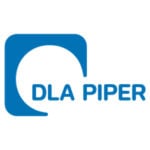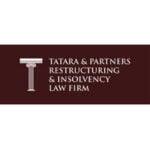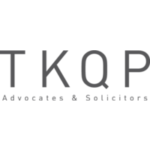-
What forms of security can be granted over immovable and movable property? What formalities are required and what is the impact if such formalities are not complied with?
In Canada, the common forms and requirements for the creation and perfection of security granted over immovable and movable property depend on provincial/territorial legislation. Canada is a federal jurisdiction with two distinct legal systems. All provinces and territories are common law jurisdictions except the Province of Québec, which is a civil law jurisdiction.
Immovable property
Common law jurisdictions
Forms of security over immovable property/real property commonly utilized in the common law provinces include:
- Mortgages. Generally used on specific parcels of real property, financed by one or multiple lenders.
- Debentures. Commonly used in commercial lending transactions to cover multiple parcels of real property, as well as movable property. Similar to a mortgage, there may be one or multiple lenders.
- Trust deeds. Commonly used in sophisticated bond financings and syndicated loan transactions where many lenders are involved.
In rare circumstances, a person without a registered mortgage may be able to assert an equitable mortgage or interest in immovable property. An equitable mortgage may arise where the original mortgage documentation is defective in some way, and the court has been asked to deem the mortgage as an equitable mortgage. Generally equitable interests in land are not enforceable against the holders of registered mortgages.
For a security interest granted over immovable property to be enforceable, the mortgage, debenture or trust deed must be (1) in writing; and (2) registered on the title to the property that is subject to the charge.
Each province and territory in Canada has its own real property registry system. The registration of a charge in the applicable real property registry system constitutes notice of a security interest.
The various provincial Personal Property Security Acts (PPSA) may apply to fixtures that have become immovable property and are not collateral classified as consumer goods, provided the security interest was created when the fixture was movable property (see below, Movable property).
If registration requirements are not complied with, a creditor’s security interest will be ineffective over the debtor’s immovable property in a bankruptcy. Furthermore, any secured creditors holding unregistered interests in relation to such property will rank in priority with other unsecured creditors in a bankruptcy.
Québec
In Québec, security over immovable property is generally obtained through a hypothec, which is similar in function to a mortgage. To be enforceable, a hypothec must be (1) created by deed; (2) signed in the presence of a Québec notary; and (3) registered in the land registry office of the jurisdiction where the property is located.
Registration of rights on movable and immovable property must be in French. Documents accompanying these applications must be in French, or accompanied by a translation authenticated in Québec.
As in common law jurisdictions, the registration of a hypothec serves as notice of the security interest.
The impacts of non-compliance with the above registration requirements are the same as in common law jurisdictions. If registration requirements are not complied with, a creditor’s security interest will be ineffective over the debtor’s immovable property in a bankruptcy, and any secured creditors holding unregistered interests in relation to such property will rank in priority with other unsecured creditors in a bankruptcy.
Movable property
Like immovable property, the treatment of movable/personal property depends on whether the property is located in a common law or civil law jurisdiction.
Common law jurisdictions
Creditors can take security over movable property under a properly executed and registered security agreement. Typical types of security agreements include general security agreements, chattel mortgages, general assignments of accounts and equipment leases.
A general security agreement is an agreement under which the debtor grants the secured party a security interest over all of the debtor’s present and after-acquired property. A chattel mortgage or equipment lease is an agreement under which the debtor grants a security interest over specific assets. A general assignment of accounts grants a security interest over accounts owing to the debtor.
For movable property, most Canadian provinces and territories have adopted provincial PPSA legislation. PPSA legislation is structured to apply to both (i) transactions which create (in substance) a security interest in personal property, regardless of the type of security involved; and (ii) certain enumerated transactions when the enumerated transaction secures payment or the performance of an obligation (for example, leases for a term of more than one year).
To be enforceable against third parties, a security interest in the debtor’s personal property must be both attached and perfected.
Attachment of a security interest occurs when all the following conditions are met:
- value is given;
- the debtor has acquired rights in the secured asset over which the security is being granted;
- a written security agreement is signed by the debtor; and
- the written security agreement provides a clear description of the secured asset over which the security interest has been granted.
Perfection of a security interest can be achieved in a number of different ways. Most commonly, perfection of a security interest is achieved by registration under the PPSA in the applicable electronic registration system. Alternatively, perfection can be achieved by possession of the secured asset by the secured party. Perfection by possession can be used where the secured asset is chattel paper, a tangible good, an instrument, a negotiable document of title or money.
Furthermore, investment property can be perfected by control, amongst other means. Control is obtained when a secured party can sell the property without any further action by the debtor. Depending on the type of investment property, this can be achieved by either the secured party becoming the entitlement holder, or the secured party and the debtor entering into a control agreement.
A security interest in a secured asset that is perfected as at the date a debtor commences insolvency proceedings will be effective against a trustee in bankruptcy. In contrast, an unperfected security interest will not be effective in an insolvency and, in terms of priority, the creditor will rank as an unsecured creditor.
Mistakes in registering a PPSA financing statement can be (although are not always) fatal to a secured creditor’s security, rendering the security interest unperfected. A security interest in the personal property of a debtor that has not attached and/or been perfected will be ineffective against a trustee in bankruptcy. This means the creditor will rank with any other unsecured creditors for any recovery of debt.
Québec
Security over movable property in Québec is granted under a hypothec, as with immovable property. However, the requirements for deeds of hypothec over movable property differ from those applicable to hypothecs for immovable property. For example, a notary is not required for the creation of a hypothec over moveable property.
The movable hypothec may be granted with delivery or without delivery in favour of the creditor. The hypothec will be with delivery if: (i) the property subject to the security interest has been remitted to the creditor or third party (pledge); or (ii) the creditor has obtained control over the property subject to the security. The hypothec with delivery does not have to be published (the Québec equivalent to perfection, as discussed above) in order to be effective against a trustee in bankruptcy.
The hypothec will be without delivery if the creditor does not have possession or control of the property subject to the security interest. In such case, the hypothec must be published and, therefore, recorded electronically in the Register of Personal and Movable Real Rights (RPMRR), in order to be effective against a trustee a bankruptcy. Therefore, a movable hypothec without delivery that has not been published will be ineffective against a trustee in bankruptcy. This means the creditor will rank with any other unsecured creditors for any recovery of debt.
Although not a form of security per se, a reservation of ownership (title retention) must be published at the RPMRR by the owner of movable property subject to a contract of sale by instalment, a lease, or a leasing agreement (crédit-bail) to set up against third parties.
A security in the movable property of a debtor that has not been published will be ineffective against a trustee in bankruptcy. This means the creditor will rank with any other unsecured creditors for any recovery of debt.
-
What practical issues do secured creditors face in enforcing their security package (e.g. timing issues, requirement for court involvement) in out-of-court and/or insolvency proceedings?
A secured creditor must provide an insolvent debtor with reasonable notice of its intention to enforce its security. Under the BIA, a secured creditor who wishes to enforce its security on all or substantially all property and assets of an insolvent debtor must give prior notice of its intention to do so by way of notice pursuant to section 244 of the Bankruptcy and Insolvency Act (BIA) (a “244 Notice”). Following the issuance of a 244 Notice the secured creditor must wait ten days before taking further steps, unless the debtor consents to an earlier enforcement at the time of the delivery of the 244 Notice.
In certain circumstances, an interim receiver may be appointed where a creditor is concerned about the diminution of the value of the security in question during the statutory ten-day 244 Notice period (see below at Question 8 for specifications relating to Québec). To appoint an interim receiver, a court must be satisfied that (i) the debtor is an insolvent person as defined under the BIA; (ii) that the 244 Notice has been or is about to be sent to the insolvent debtor; and (iii) the appointment of an interim receiver is necessary to protect either the debtor’s estate or the interests of the creditor who has or is about the send the 244 Notice.
Whether court involvement is sought typically depends on the terms of the underlying security agreement. Often, the terms of the security agreement will provide that the secured creditor may appoint a receiver both privately, or by seeking a court appointed receiver.
Apart from timing issues, creditors may become subject to statutory or court-ordered stays of proceedings where a debtor commences restructuring or insolvency proceedings (see below Questions 3 and 9).
-
What restructuring and rescue procedures are available in the jurisdiction, what are the entry requirements and how is a restructuring plan approved and implemented? Does management continue to operate the business and / or is the debtor subject to supervision? What roles do the court and other stakeholders play?
The main restructuring and rescue procedures in Canada are proceedings pursuant to the CCAA and proposal proceedings pursuant to Part III of the BIA.
In addition, in appropriate circumstances, the arrangement provisions contained in the Canada Business Corporations Act and equivalent provincial corporate statutes may be used as an alternative to the formal insolvency proceedings under the BIA and CCAA outlined below.
CCAA proceedings
The principal objective of the CCAA is to enable a debtor company to formulate a plan of compromise or arrangement in respect of the debtor’s obligations owing to its creditors, to be voted on by the creditors, and if approved by the requisite majority in each class of creditors, sanctioned by the court overseeing the debtor company’s CCAA proceedings.
Despite this objective, in many CCAA proceedings, the debtor will not formulate or file a plan of arrangement, but rather uses proceedings under the CCAA as a mechanism to effect a sale of all, or part of its business, property and/or assets, through either the implementation of a sales or liquidation process, or a pre-packaged sale transaction that was formulated prior to (but consummated as part of) the CCAA proceedings.
Either a creditor or the debtor can initiate CCAA proceedings by application to the court.
CCAA proceedings can only be commenced in respect of insolvent corporations with outstanding debts in excess of $5,000,000.
Generally, the court will exercise its discretion to grant protection if:
- a reorganisation, or orderly sale/liquidation of the debtor company’s business would be beneficial to the debtor company’s stakeholders.
- the debtor company does not have an improper motive for making the application.
- the relief being sought pursuant to the initial order under the CCAA (Initial Order) is limited to that which is reasonably necessary for the continued operation of the debtor company in the ordinary course of business during the initial ten day stay period.
Provided the debtor company (or creditor as the case may be), can establish that the debtor company meets the requirements of the CCAA, the burden will be on any opposing creditors to show why the court should not grant the relief requested.
To proceed under the CCAA, the debtor must:
- be insolvent, meaning that either the debtor is unable to meet its liabilities as they fall due (cash flow test), or the debtor’s assets are less than its liabilities (balance sheet test); and
- have debts in excess of CAD 5 million (including any affiliate companies).
A company that has made an assignment in bankruptcy pursuant to the BIA can be granted protection under the CCAA provided it satisfies the necessary statutory conditions (including the requirement for inspector approval, if inspectors have been appointed in the bankruptcy), is not otherwise barred from relief, and can demonstrate that such relief is appropriate in the circumstances. Although possible, the commencement of CCAA proceedings by a bankrupt company remains uncommon at the time of writing.
Under the CCAA, a monitor (that is, a person licensed to act as a trustee) is appointed to oversee the proceedings of the debtor company, report on the debtor company’s business and financial affairs from time to time, and to assist the debtor company with the formulation of its plan of reorganisation.
The CCAA is a debtor-in-possession regime meaning the debtor remains in control of its business and its property and assets. However, the debtor remains subject to the monitor’s scrutiny and if a transaction is outside the ordinary course of business, or does not comply with any court-imposed restrictions, the monitor will report such activities to the court.
Where a debtor is granted protection under the CCAA, the court will issue an Initial Order prohibiting all secured and unsecured creditors from taking any further steps to pursue any existing or future claims against the debtor and its directors and officers, without either the prior consent of the debtor and monitor or leave of the court.
CCAA proceedings do not have a prescribed time limit. After the making of the Initial Order, the debtor is granted up to 10 days of protection from its creditors. Within the initial stay period, the debtor must return to court to request an extension. After the initial protection period, there is no limit on the length of any extension or on the number of extensions that a debtor may seek from the court, provided the applicant seeking the extension can show that circumstances exist that make the order appropriate and that the applicant has acted and is acting in good faith and with due diligence.
For a reorganisation plan to be accepted by creditors, a meeting must be held for the purpose of voting on the reorganisation plan, and a majority in number of each class of creditors holding two-thirds in value of the total debt represented by that class, must vote in favour of the plan. Once the reorganisation plan is accepted by the requisite majority in each class of creditor, the plan must be approved by the court before it becomes binding on those classes of creditors that voted in favour of the plan.
Once the CCAA reorganisation plan is approved by the requisite majority of the debtor’s creditors in each class and is thereafter sanctioned by the court, the debtor will have successfully concluded a compromise or arrangement with its creditors with regard to the debts owed to such creditors before the commencement of CCAA proceedings, provided that the payments or consideration required under the CCAA and the plan are made or provided when required.
After the implementation of the plan and at the conclusion of the CCAA proceedings, the debtor can resume its normal business operations.
BIA proposal
The objective of proposal proceedings pursuant to the BIA is to enable a debtor to reach a compromise with its creditors through a restructuring of its obligations pursuant to a proposal. Proposal proceedings under the BIA may also be used by the debtor as a mechanism to effect a sale of all or part of its business, property and/ or assets.
Under the BIA, a proposal may be made by an insolvent person, a receiver, a liquidator of an insolvent person’s property, a bankrupt, and a trustee of the estate of a bankrupt. There is no minimum debt requirement for companies to be eligible to make proposals under the BIA.
A BIA proposal is initiated by either filing a proposal, or filing a notice of intention to make a proposal (“Notice of Intention”). On the filing of the Notice of Intention, all creditors are stayed for an initial period of 30 days (unless a secured creditor has filed a notice pursuant to section 244 of the BIA and the statutory ten-day period has expired).
To proceed with a proposal under the BIA, the debtor must:
- be insolvent under either the cash flow test or balance sheet test (see above, CCAA proceedings).
- have at least CAD$1,000 in unsecured indebtedness.
Once the debtor has filed either a proposal or a Notice of Intention, the court will appoint a trustee to supervise the proposal process. The role of the trustee in BIA proposal proceedings is to monitor the debtor’s actions, assist the debtor in developing the proposal and in reaching a compromise with its creditors, and to alert the court if there are any material adverse changes.
The debtor remains in control of its property and assets throughout the duration of BIA proposal proceedings and the appointed trustee does not directly have any control over the debtor’s affairs.
Once a proposal or Notice of Intention has been filed, no creditors (whether secured or unsecured) can bring or continue any proceedings against the debtor. The stay of proceedings prohibits any creditor from exercising any remedy against the debtor or its property, or commencing or continuing any action, execution or other proceeding for the recovery of a claim provable in bankruptcy without leave of the Court granted on motion on notice to the debtor and the proposal trustee (See Question 9).
Secured creditors may enforce their security interest only if they have served a notice pursuant to section 244 of the BIA on the debtor and the statutory ten-day notice period has lapsed (or the debtor company consented to an earlier enforcement by the secured creditor at the time that the section 244 notice was delivered by the secured creditor, or thereafter).
BIA proposal proceedings proceed on defined time limits. On the filing of a Notice of Intention, all creditors are stayed for an initial period of 30 days. The time for filing a proposal (and the stay period) can be extended by the court for a maximum period of six months (including the initial 30 day stay), in 45-day intervals.
Both the debtor’s creditors and the court must approve of a proposal pursuant to the BIA. At least two-thirds in value and a majority in number of the creditors, including secured creditors to whom the proposal was made, must approve of the proposal. Following the creditors’ approval, the court will approve the proposal if it is for the general benefit of the creditors. To this extent, evidence must be adduced to show that the debtor’s creditors will be better off under the terms of the proposal than they would be if the debtor were liquidated pursuant to bankruptcy proceedings.
Once the debtor has fulfilled all of its obligations as set out in the BIA proposal, the trustee will issue a certificate confirming the debtor’s full compliance with its obligations under the proposal. Once the trustee’s certificate is issued, the debtor is considered to have completed its restructuring and may resume normal operations of its business. However, if the debtor defaults on its obligations to its creditors under the proposal, as approved by its creditors and the court, the debtor will be deemed to have made an assignment into bankruptcy. Similarly, if a debtor’s proposal is rejected by creditors by a majority in number or one-third by value, the debtor will be deemed to be bankrupt.
-
Can a debtor in restructuring proceedings obtain new financing and are any special priorities afforded to such financing (if available)?
A debtor subject to CCAA proceedings or BIA proposal proceedings may obtain interim financing, referred to as debtor-in-possession (DIP) financing.
DIP financing must be approved by the court. A supervising court will consider the following factors (amongst other things) in determining whether to grant an order approving of DIP financing:
- the period during which the debtor/company is expected to be subject to the proceedings;
- how the debtor’s/company’s business and financial affairs are being managed during the proceedings;
- whether the debtor’s/company’s management has the confidence of its major creditors;
- whether the loan would enhance the prospects of a viable compromise or arrangement being made in respect of the debtor/company;
- the nature and value of the debtor’s/company’s property;
- whether any creditor would be materially prejudiced as a result of the security or charge; and
- the monitor’s or trustee’s report, if any.
Where an order is granted approving of DIP financing to the debtor, a DIP lender may be granted a corresponding priority charge over the debtor’s property and assets, and over existing secured creditor claims. The special priority granted to a DIP lender may however remain subject to other court-ordered priority charges that are granted. Existing secured creditors will be notified prior to the court granting an order for DIP financing.
Under the CCAA, where the debtor’s application for interim financing is made at the same time as the initial application for protection under the act, the court must additionally be satisfied that the terms of the loan are limited to what is reasonably necessary for the continued operation of the debtor company in the ordinary course of business during the initial 10 day stay period.
-
Can a restructuring proceeding release claims against non-debtor parties (e.g. guarantees granted by parent entities, claims against directors of the debtor), and, if so, in what circumstances?
Canadian courts have accepted that in certain circumstances, third party releases can assist in facilitating effective restructurings.
Under the CCAA, Canadian courts have held that the court’s jurisdiction to grant third-party releases stems from the flexible nature and remedial purposes of the statute. The court has held that third-party releases are appropriate and may be granted where there is a “reasonable connection” between the third-party claim being compromised in the plan and the restructuring achieved by the plan.
In considering whether a reasonable connection exists between the claim being compromised and the proposed restructuring, a court will assess whether:
- the parties to be released are necessary and essential to the restructuring of the debtor;
- the claims to be released are rationally related to the purpose of the plan and necessary for it;
- the plan cannot succeed without the releases;
- the parties who are to have claims against them released are contributing in a tangible and realistic way to the plan; and
- the plan will benefit not only the debtor companies but [creditors] generally.
-
How do creditors organize themselves in these proceedings? Are advisory fees covered by the debtor and to what extent?
The organization and involvement of creditors in proceedings under the CCAA or the BIA proposal provisions varies depending on the particular circumstances and complexity of each case.
There is no formal requirement or statutory framework under the CCAA or the BIA for the formation of creditors’ committees in proceedings under those statutes. However, creditor’s committees have been formed, recognized and accepted by Canadian courts in limited circumstances in CCAA proceedings, and have been granted court-approved funding from the debtor in certain fact specific cases.
Creditors’ committees are not standard practice in Canada.
-
What is the test for insolvency? Is there any obligation on directors or officers of the debtor to open insolvency proceedings upon the debtor becoming distressed or insolvent? Are there any consequences for failure to do so?
The BIA defines an insolvent person as a person who is not bankrupt and who resides, carries on business or has property in Canada, whose liabilities to creditors amount to one thousand dollars, and:
- who is for any reason unable to meet their obligations as they generally become due,
- who has ceased paying their current obligations in the ordinary course of business as they generally become due, or
- the aggregate of whose property is not, at a fair valuation, sufficient, or, if disposed of at a fairly conducted sale under legal process, would not be sufficient to enable payment of all their obligations, due and accruing due.
There are no express obligations imposed on the directors of a debtor company to initiate bankruptcy or restructuring proceedings on behalf of the debtor company. However, directors may consider it prudent to commence a bankruptcy proceeding to avoid or minimize any statutory liabilities for which the directors may be personally liable by reason of being a director of an insolvent company. Directors may also consider that a bankruptcy filing is required to avoid any potential claims that the debtor company traded while “knowingly insolvent” or that the affairs of the debtor company were carried on in a manner that was oppressive to its creditors.
-
What insolvency proceedings are available in the jurisdiction? Does management continue to operate the business and / or is the debtor subject to supervision? What roles do the court and other stakeholders play? How long does the process usually take to complete?
Apart from the restructuring proceedings described in detail above (see Question 3, CCAA Proceedings and BIA Proposals), the main insolvency procedures in Canada are bankruptcy and receivership.
Bankruptcy
The formal liquidation of an insolvent debtor is most commonly carried out through bankruptcy proceedings pursuant to the BIA. In the context of liquidation, bankruptcy is intended to provide for the fair distribution of the debtor’s unencumbered assets among its unsecured creditors.
In bankruptcy, the pre-bankruptcy remedies of a debtor’s unsecured creditors are replaced with the right to file a claim and receive a dividend in the distribution of proceeds resulting from the liquidation of the bankrupt debtor’s unencumbered assets. However, secured creditors of a bankrupt debtor can also enforce their security outside of the administration of bankruptcy.
Under the BIA, a debtor is considered bankrupt when they:
- have debts of at least CAD$1,000 owing to their creditors; and
- have committed an act of bankruptcy within the six months before the application for a bankruptcy order (which may include having become insolvent and unable to meet their financial obligations generally as they become due).
A bankruptcy can be initiated in three ways where the debtor is insolvent.
First, the debtor may voluntarily assign itself into bankruptcy. Such proceedings are commenced by the trustee in bankruptcy selected by the debtor filing certain prescribed forms (an assignment for the general benefit of creditors by the debtor and a statement of affairs, sworn by the debtor listing its assets and liabilities) with the Office of the Superintendent of Bankruptcy. For a corporate debtor, initiation also requires the company’s board of directors to pass a resolution before assigning itself into bankruptcy. The resolution is also filed with the Office of the Superintendent of Bankruptcy.
Second, a debtor may be involuntarily placed into bankruptcy by an order of the court on application by one or more of the debtor’s creditors.
Finally, a debtor may become bankrupt as a result of the failure of proposal proceedings under the BIA.
Once the bankruptcy is effective, all the debtor’s property and assets vest in the trustee (subject to the rights of secured creditors) and the debtor ceases to have any control over its affairs. In a corporate bankruptcy, the trustee replaces the management of the corporation and assumes full control over all of the debtor’s assets and property. On bankruptcy, the trustee proceeds to administer the estate for the benefit of the bankrupt’s unsecured creditors. Secured creditors retain their right to enforce on their security, provided they do so in a commercially reasonable manner.
Under the BIA, a bankrupt corporation is not eligible to obtain a discharge from bankruptcy unless it has satisfied the claims of creditors in full. Unlike a BIA proposal, there is no specified timeline for corporate bankruptcy proceedings.
Once the trustee has administered the estate for the benefit of the bankrupt’s unsecured creditors, the trustee applies to the court for a discharge from their duties.
Further details with respect to proving claims in bankruptcy proceedings are outlined in Question 10 below.
Receivership
The BIA provides for the enforcement of security and the appointment of a receiver on a national basis. As noted above (see Question 2) a 244 Notice must be delivered prior to a secured creditor enforcing its security on all or substantially all of the property and assets of an insolvent debtor. Once the ten-day 244 Notice period has lapsed (or, if the debtor has consented to an earlier enforcement at the time of the delivery of the 244 Notice) a secured creditor may proceed with applying for the appointment of a receiver.
In Québec, a prior notice of the exercise of a hypothecary right is also required and applies concurrently to the ten-day 244 Notice period mentioned above. In light of a recent Québec Court of Appeal case (Sequestre de Media5 Corporation, 2020 QCCA 943) applying the reasoning of the Supreme Court of Canada in Lemare Lake, the statutory prior notice periods of 20 days for movable property and 60 days for immovable property must be respected for a receiver to be appointed in Québec. Elsewhere in Canada, the legislator has decided to use the receivership route as a mean of realizing on security interests, whereas in Québec, recourses available to creditors to realize their security interests are provided under Québec civil law.
The Court stated that the statutory requirements of Québec law were not in conflict with the insolvency laws, which is of federal jurisdiction. The reasoning behind this position is that the Québec requirements are simply incidentally applicable to an area of federal jurisdiction and Parliament has not in any way limited the application of provincial law in this area.
A receiver or receiver/manager may be appointed either (i) privately, by a secured creditor; or (ii) by court order.
(i) Private Appointment of a Receiver
The right of a secured creditor to privately appoint a receiver is governed by the terms of the applicable security agreement. The powers of the receiver must also be set out in the security agreement.
Privately appointed receivers usually have broad powers, including the power to carry on the business of the debtor and to sell the debtor’s assets by auction, tender or private sale. That being said, it is not currently common for secured creditors to enforce their security by way of the appointment of a private receiver. Court appointed receivers are preferred by most secured creditors over private receivers.
(ii) Appointment of a Receiver by Court Order
The jurisdiction for a court appointment of a receiver is found in the applicable provincial judicature acts, rules for court proceedings, under section 243 of the BIA, and under certain specific statues (for instance securities legislation).
The court appointment of a receiver typically commences by a secured creditor bringing an action or application against the debtor. The receiver is then appointed in a summary proceeding within that action or application.
A court order appointing a receiver typically:
- stays proceedings against the receiver and debtor;
- provides the receiver with control over the property and assets of the debtor;
- authorises the receiver to carry on the debtor’s business and to borrow money on the security of the assets;
- ultimately authorises the receiver to sell the debtor’s property and assets with the approval of the court; and
- authorises the receiver to commence and defend litigation in the debtor’s name.
Unlike privately appointed receivers, whose duty is primarily to the appointing secured creditor (subject to a general duty to act in a commercially reasonable manner), a court-appointed receiver is an officer of the court and has a duty to protect the interests of all the debtor’s creditors.
Once the receiver is appointed, the receiver’s duties include:
- giving notice of its appointment to all creditors.
- issuing reports on a regular basis outlining the status of the receivership.
- preparing a final report and statement of receipts and disbursements when the appointment is completed or terminated.
-
What form of stay or moratorium applies in insolvency proceedings against the continuation of legal proceedings or the enforcement of creditors’ claims? Does that stay or moratorium have extraterritorial effect? In what circumstances may creditors benefit from any exceptions to such stay or moratorium?
Bankruptcy
Once bankruptcy has commenced, the BIA provides for an automatic stay of proceedings. The stay of proceedings prevents the debtor’s unsecured creditors from either exercising any remedy against the debtor or its property, or commencing or continuing any action, execution or other proceeding for the recovery of a claim provable in bankruptcy.
As the BIA is federal legislation, the stay of proceedings applies nationally in Canada. However, recognition proceedings must be taken in the appropriate foreign jurisdiction for the stay of proceedings to have an extraterritorial effect.
The bankruptcy stay does not affect secured creditors, who are generally free to enforce their security outside of the liquidation process.
Receivership
Privately Appointed Receiver
Privately appointed receivers operate without the benefit of any stay of proceedings either in favour of the debtor or in relation to the actions of the receiver carrying out their duties. The lack of any stay of proceedings is attributable to the fact that a privately appointed receiver’s powers stem from the instrument appointing them, and not an order of the court, which binds all persons within the jurisdiction of that court.
Privately appointed receivers may protect themselves from claims through such receiverships by obtaining an indemnity from their appointing creditor, but they will not have the procedural protection of a stay.
Court Appointed Receiver
A stay of proceedings is a critical feature of a court-appointed receivership. Stays typically arise from the terms of the appointment order and enjoin all proceedings and actions as against the debtor and the receiver. Such terms allow the receiver to take possession of the property and assets of the debtor, without concern that other creditors will attempt to seize those assets, which could prejudice the body of creditors as a whole. Stays of proceedings as against the receiver also prevent a court-appointed receiver from being named as a party to litigation during the course of the receivership without leave of the court.
The stay of proceedings as against the debtor and/or the receiver may be lifted with the written consent of the receiver or leave of the court (obtained on motion to the court, on notice to the receiver). The test for leave to proceed despite the general stay requires the demonstration of material or unique prejudice to the creditor seeking relief. This is prejudice not suffered by the general body of creditor as a result of the insolvency.
The inclusion of a stay of proceedings as against the receiver is a recognition by the court that the receiver, as a court appointed officer, is entitled to protection in the performance of the duties it has been directed to perform. Further, such a stay allows the receiver to gather in the assets of the debtor without interference from creditors.
Like in bankruptcy proceedings, a stay of proceedings that is effective upon the court appointing a receiver applies nationally inside Canada. However, recognition proceedings must be sought in the appropriate jurisdiction for the stay of proceedings to have an effect outside of Canada.
-
How do the creditors, and more generally any affected parties, proceed in such proceedings? What are the requirements and forms governing the adoption of any reorganisation plan (if any)?
Bankruptcy
Following the commencement of bankruptcy proceedings, the trustee is required to give notice of the bankruptcy to all known creditors of the bankrupt, and convene a first meeting of the creditors of the bankrupt within 21 days of appointment.
In bankruptcy proceedings, the BIA provides that creditors of the bankrupt nominate and appoint inspectors to represent their interests.
The role of inspectors is to oversee the bankruptcy proceedings and to approve of certain actions and steps including the sale of most assets. Inspectors supervise the trustee on behalf of creditors and instruct the trustee to act in a manner that is appropriate in order to protect the interests of creditors and the bankrupt estate.
In order to participate in any distribution of the bankrupt’s estate, creditors must file a proof of claim with the trustee in the manner and form prescribed under the BIA. Where such a claim is allowed, said creditor will, in accordance with the priority regime set out under the BIA, be eligible to potentially share in the recovery from any realization on the property of the bankrupt debtor. Creditors whose claims are disallowed by the trustee may appeal the trustee’s decision to the court.
The debtor’s assets are distributed to unsecured creditors on a pro rata basis in accordance with the creditors’ proven claims. Such distributions are made only after secured creditors have realised their security and after super-priority and preferred creditors have been paid.
Receiverships
As noted above, a privately appointed receiver’s duties are owed primarily to the secured creditor that appointed it.
In contrast, a court appointed receiver is an officer of the court who must act in the interest of all creditors, is subject to the court’s authority and direction and remains accountable to the court throughout the duration of the receivership proceedings. A court-appointed receiver has a fiduciary duty to act in the best interest of all interested parties, including the debtor. Court-appointed receivers must seek court approval for, among other things, the sale of the property of the debtor above a determined dollar amount threshold.
In both private and court appointed receivership proceedings, the receiver is obligated to provide notice of its appointment to all known creditors of the debtor, and report on the progress of the receivership during various stages of the administration of the receivership. The reports prepared by a receiver are filed with the Office of the Superintendent of Bankruptcy and are made available to all creditors.
In court appointed receiverships, the court typically issues a stay of proceedings restricting all creditors from exercising any rights or remedies against the debtor without prior leave of the court (see Question 9 above). The stay of proceedings operates to bring all creditors under the same proceedings, unlike a private receivership where there is no stay of proceedings and a multiplicity of proceedings can arise against the debtor where multiple creditors take steps to enforce their security (particularly where priority disputes arise among competing claims).
Throughout the administration of a court-appointed receivership, the receiver will either sell the assets of the business in bulk or in lots. Where the receiver is operating the business as a going concern, it may attempt to sell the business as a going concern. Sales in receivership proceedings may also be structured as “reverse vesting” share acquisition transactions (see Question 14). In conducting a sale process, a court-appointed receiver will usually consult creditors who are likely to be impacted by the transaction.
As noted above (see Question 8) privately appointed receivers are subject to a general duty to act in a commercially reasonable manner, including the duty to endeavor to maximize recovery and obtain the best price possible for the debtor’s assets in the circumstances.
The distribution of proceeds from the realization on the assets of a debtor in court appointed receivership proceedings is completed in accordance with creditor’s entitlements and priority, subject to court approval. Where there is potential for recovery to unsecured creditors, a court-sanctioned claims process may follow, or court approval may be sought to assign the debtor into bankruptcy and deal with unsecured claims through bankruptcy proceedings. However, in many circumstances, the only recovery is to secured creditors (obviating the need for a formal claims process).
Bankruptcy and receivership proceedings do not generally involve the adoption of a reorganization plan. For information on how restructuring plans are approved and implemented in the course of CCAA proceedings and BIA proposal proceedings, see Question 3, above.
-
How do creditors and other stakeholders rank on an insolvency of a debtor? Do any stakeholders enjoy particular priority (e.g. employees, pension liabilities, DIP financing)? Could the claims of any class of creditor be subordinated (e.g. recognition of subordination agreement)?
On a debtor’s insolvency, creditor’s claims rank in the following order:
- Super-priority claims including:
- valid trust claims;
- realty property taxes;
- certain deemed trusts and super-priority pension and wage claims;
- claims for specified amounts and periods for wages and pension contributions;
- qualified unpaid supplier claims, commonly referred to as “30-day good claims” or “revendication claims”;
- unremitted payroll deductions; and
- court-ordered charges in Companies’ Creditors Arrangement Act (CCAA) proceedings (see Question 3) and proposal proceedings under the BIA (see Question 3) and receivership proceedings (see Question 9).
- Secured claims.
- Preferred unsecured claims including:
- landlord claims for up to three months’ accelerated rent;
- amounts that would have been paid to a secured creditor but for the payment of wage and pension claims;
- certain workers’ compensation claims; and
- general unsecured claims.
Super-priority claims and secured creditor claims will be paid out from the proceeds derived from any sales that occur during the insolvency proceedings in accordance with their priority standing at the time of the sale. Where a sale of the debtor’s assets result in a surplus of proceeds after the satisfaction of super-priority claims and secured creditor claims, those surplus proceeds are shared ratably among all general unsecured creditors.
Claims of creditors have priority over the claims of shareholders. Other than for certain claims that are given explicit priority under statute, secured creditors rank ahead of preferred and unsecured creditors.
The BIA and CCAA provide the court overseeing CCAA, proposal and receivership proceedings jurisdiction to make orders granting super-priority charges that will rank ahead of secured creditors to the extent such creditors have received notice of the proposed charges. The charges can include the following.
- Administration charge securing the fees and disbursements of the debtor’s and court officer’s legal and financial advisors. In a receivership, this is termed a receiver’s charge.
- Interim financing charge securing DIP financing. This is called a receiver’s borrowing charge in receiverships.
- Directors and officers charge securing the indemnity provided by the debtor to its directors and officers for liabilities that they might incur in their capacities as directors and officers during the course of the proceeding. In CCAA and proposal proceedings only.
- Critical supplier charge in both CCAA and proposal proceedings, the court has the authority to order a critical supplier to continue to supply following the commencement of the proceedings provided that the court also issues an order securing the post-filing payment obligations to that supplier.
The BIA also contains statutory provisions granting priority charges (or similar protections in the context of CCAA proceedings) protecting employees’ claims for unpaid wages and vacation pay for the six months period preceding the commencement of the proceedings, up to CAD2,000 per employee. The charge covers account receivables, inventory and cash of the debtor. A similar charge against all assets of the debtor protects certain prescribed unremitted pension contributions. Finally, the CCAA provides that a court may not approve a CCAA plan unless it is satisfied that an employer’s unremitted source deductions (such as income taxes, unemployment insurance premiums and Canada pension plan premiums) that were outstanding at the time of filing will be paid during the six months period following implementation of the CCAA plan.
Generally speaking, an agreement between creditors with respect to their relative priorities such as a valid subordination agreement, will be enforced as a valid contract.
- Super-priority claims including:
-
Can a debtor’s pre-insolvency transactions be challenged? If so, by whom, when and on what grounds? What is the effect of a successful challenge and how are the rights of third parties impacted?
The BIA and CCAA allow for pre-insolvency transactions to be set aside in the following situations:
- where a preference has occurred.
- where a transaction at undervalue has occurred.
- where a bankrupt corporation has made certain payments within a defined period prior to the initial bankruptcy event at a time when the corporation was insolvent
Proceedings to challenge a transaction as a preference or transfer at undervalue can be initiated by a trustee (under the BIA) or monitor (under the CCAA).
Furthermore, certain provincial legislation permits creditors to seek to set aside preference transactions and transactions to defeat, delay or defraud creditors.
Preference
A preferential transaction occurs where one creditor receives payment over another creditor before the initial bankruptcy event, or the date proceedings were commenced under the CCAA, with the effect of the debtor preferring one creditor over another.
One of the following circumstances must be evident for a transaction to be considered a preference under the BIA or CCAA:
- if the debtor and creditor are not related, the payment must have been made within three months of the initial bankruptcy event (or the date proceedings were commenced under the CCAA).
- if the parties are related (such as a family member), the payment must have been made within 12 months of the initial bankruptcy event (or the date proceedings were commenced under the CCAA).
A transaction deemed preferential is void and will be set aside by the court. The money is then distributed to the bankrupt’s estate in the manner set out in Question 11.
Transaction at undervalue
A transaction at undervalue occurs where the debtor was insolvent at the time the transaction occurred, or became insolvent as a result of the transaction, and the intent of the debtor was to defeat, delay or defraud its creditors.
For a transaction to be considered a transaction at undervalue under the BIA or CCAA, the transaction must have occurred:
- if the parties are not related, within one year of the commencement of the bankruptcy proceedings (or the date proceedings were commenced under the CCAA) and while the debtor was insolvent, with intent to defeat creditors.
- if the parties are related, within:
- One year of the commencement of bankruptcy proceedings, without proof of insolvency at the time of the transaction and without demonstrating intent to defeat creditors; or,
- five years of the commencement of the bankruptcy proceedings (or the date proceedings were commenced under the CCAA) if the debtor was insolvent at the time of the transaction or the transaction was intended to defeat creditors.
Where a transaction at undervalue occurs, a court can set aside the transaction, or order the recipient of the payment to pay the difference between what they paid for the property and the actual fair market value of that property.
Improper payments by the bankrupt corporation
Under the BIA, a court may inquire into whether the following payments made by a debtor corporation was made at the time when the corporation was insolvent (or such payment rendered the corporation insolvent):
- the payment of a dividend (other than a stock dividend) or redemption or purchase for cancellation any of the shares of the capital stock of the corporation; or
- the payment of termination or severance pay or incentive pay or other benefits to a director, officer or manager of the corporation.
If a Court finds that such payments have been made improperly, judgement may be made against the directors of the debtor corporation requiring repayment of such amounts.
These provisions of the BIA place a reverse onus on the directors of the bankrupt corporation to prove that any of the aforementioned payments were
- made in the ordinary course of business;
- not conspicuously over the fair market value of the consideration received by the corporation; and
- made at a time when the corporation was not insolvent or that the transaction did not render the corporation insolvent (or that the directors had reasonable grounds to believe the foregoing).
Directors who objected to the corporation making payments of such benefits are exonerated from liability.
-
How existing contracts are treated in restructuring and insolvency processes? Are the parties obliged to continue to perform their obligations? Will termination, retention of title and set-off provisions in these contracts remain enforceable? Is there any ability for either party to disclaim the contract?
In restructuring proceedings under the CCAA and the proposal provisions of the BIA, once the debtor has initiated the process (i.e. by filing a Notice of Intention or proposal pursuant the BIA, or obtaining an initial order pursuant to the CCAA) no party may terminate or amend any agreement, including a security agreement, with the debtor, or claim and accelerated payment or a forfeiture of the terms by reason only that the debtor is insolvent or has initiated restructuring proceedings.
One exception to the above rule is with respect to “eligible financial contracts”, which include, amongst other things, derivatives agreements and agreements to borrow, lend or repurchase securities.
Furthermore, it remains open to counterparties to terminate agreements on other valid reasons or breaches (i.e. apart from insolvency of the debtor or the fact that the debtor has initiated a restructuring proceeding) that may arise in the circumstances, subject to lifting the stay of proceedings.
Despite the restrictions on contracting parties noted above, no contracting party with the debtor is obligated to advance money or credit to the debtor following the debtor initiating a restructuring process. It follows that once a debtor files a Notice of Intention or proposal pursuant to the BIA, or obtains an initial order pursuant to the CCAA, counterparties to contracts with the debtor can demand immediate payment for goods and services following that period.
With certain exceptions, a debtor company under the BIA proposal sections or the CCAA may disclaim an ongoing contract by sending notice to the contract counterparty. These disclaimer rights are subject to objection by contract counterparties and ultimately to determination by the court. Factors considered on disclaimer objections include whether a viable plan or proposal can be made without the disclaimer and whether disclaimer will cause the counterparty significant financial hardship. Exceptions to the disclaimer powers include eligible financial contracts, collective agreements, financing agreements and real property leases where the debtor is the landlord. In addition to the named exceptions noted under the BIA, Canadian courts have also found that an option to purchase land is a proprietary interest that cannot be disclaimed under the BIA, nor vested off pursuant to a vesting order.
Claims for set-off can be asserted in both CCAA and BIA proceedings where the specific legal requirements of set-off are met. However, set-off is only applicable to enforce debts or claims, so long as such debt is not triggered by an event of insolvency or bankruptcy (i.e. set-off is not applicable to claims that are invalidated by operation of the anti-deprivation rule (where a contractual provision is triggered by an event of bankruptcy or insolvency, and has the effect of removing value from the insolvent or bankrupt’s estate).
-
What conditions apply to the sale of assets / the entire business in a restructuring or insolvency process? Does the purchaser acquire the assets “free and clear” of claims and liabilities? Can security be released without creditor consent? Is credit bidding permitted? Are pre-packaged sales possible?
In restructuring proceedings under the BIA or CCAA, any sale of the debtor’s property outside of the ordinary course of business must be approved by the court. The court will consider the following factors in determining whether to approve of such a sale (among other things):
- whether the process leading to the proposed sale or disposition was reasonable in the circumstances;
- whether the trustee/monitor approved the process leading to the proposed sale or disposition;
- whether the trustee/monitor filed with the court a report stating that in their opinion the sale or disposition would be more beneficial to the creditors than a sale or disposition under a bankruptcy;
- the extent to which the creditors were consulted;
- the effects of the proposed sale or disposition on the creditors and other interested parties; and
- whether the consideration to be received for the assets is reasonable and fair, taking into account their market value.
Under the CCAA, where the proposed sale or disposition is to a person who is related to the company, the court will only grant authorization of such a sale if it is satisfied that (a) good faith efforts were made to sell or otherwise dispose of the assets to persons who are not related to the company (regardless of whether the debtor company had valid reasons for deciding to transact with the related person, and (b) the consideration to be received is superior to the consideration that would have been received under any other offer made in accordance with the process leading to the proposed sale. Under the BIA, a sale or disposal of a bankrupt’s property to a related person may only be done with the court’s authorization.
In bankruptcy proceedings under the BIA, subject to the approval of the inspectors (as applicable), the trustee is given broad power to sell the unencumbered assets of the bankrupt’s estate. However the assets of the bankrupt’s estate are sold (for example, by tender, public auction or contractual sale), such dispositions are typically on an “as is, where is” basis, and are not accompanied by any representation or warranty with respect to the title of the assets, other than with respect to the trustee’s authority to make such a sale.
Credit bids and pre-packaged sales are permitted under Canadian law and both practices are common occurrences in insolvency and restructuring proceedings. Where valid and enforceable security is in place, credit bidding is permitted, subject to the generally applicable sale approval requirements.
Typically, sales of assets or going concern businesses in insolvency proceedings allow purchasers to acquire assets free and clear, through the provisions of the court approval and vesting orders that are conventionally obtained.
In circumstances where the debtor entity holds valuable non-transferrable assets, such as licences or favorable tax attributes that a purchaser entity wishes to preserve, share acquisition transactions through the use of a “reverse vesting” structure have become more common. In a reverse vesting transaction, the unwanted assets and liabilities of a debtor entity (or debtor group) are transferred out of the debtor entity and into a related “residual co”, effectively purging the debtor corporate entity of assets and liabilities that the purchaser does not want to acquire. Consequently, the debtor entity (or entities within the debtor group) emerges from its restructuring proceedings intact under new ownership, and residual co., holding the unwanted liabilities and assets of the debtor(s), is liquidated and placed into bankruptcy. Reverse vesting transactions must also be approved by the court pursuant to the terms of an approval and reverse vesting order. When considering whether to grant an approval and reverse vesting order, courts will consider, among other things: (i) why the reverse vesting order is necessary in the circumstances; (ii) whether the reverse vesting structure produces an economic result at least as favourable as any other viable alternative; (iii) whether any stakeholder is worse off under the reserve vesting structure than they would have been under any other viable alternative; and (iv) whether the consideration being paid for the debtor’s business reflects the importance and value of the non-transferrable assets (ex. the licence, permit or other intangible asset) being preserved under the reverse vesting structure.
-
What duties and liabilities should directors and officers be mindful of when managing a distressed debtor? What are the consequences of breach of duty? Is there any scope for other parties (e.g. director, partner, shareholder, lender) to incur liability for the debts of an insolvent debtor and if so can they be covered by insurances?
Corporate directors in Canada are subject to both statutory and common law duties. Two general obligations are imposed on directors of a Canadian corporation:
- a fiduciary duty to act honestly, in good faith, and with a view to the best interests of the corporation; and
- a duty of care to exercise the care, diligence and skill of a reasonably prudent person in similar circumstances.
Corporate directors can attract personal liability under a number of provincial and federal statutes.
For example, with respect to labour relations, personal liability is imposed on directors for unpaid wages, accrued vacation pay, and in certain cases, pension plan contributions that are due but unpaid.
Furthermore, directors are personally liable for payroll remittances for amounts deducted from employee’s wages on account of income taxes, contributions to the Canada (or Québec, as applicable) Pension Plan, and for employment insurance premiums.
Directors will not be held personally liable for the above noted amounts to the extent that they can show that they were duly diligent, or that the failure to remit the amounts required in a timely manner was due to circumstances beyond their control.
Furthermore, Directors may also be held personally liable for a corporations default in payment of its goods and services tax or harmonized sales tax (HST) obligations.
Apart from the specific statutory liabilities noted above, corporate directors may also be held personally liable if they are found to have acted improperly so as to cause a loss to the company’s creditors. Furthermore, a director that provides a personal guarantee in favour of a secured creditor to guarantee the debts of a corporation may be liable under contract with respect to that guarantee.
A director’s exposure to personal liability during an insolvency can be mitigated through the purchase of director and officer insurance policies, if and to the extent available. In addition, and as noted above, in CCAA proceedings and BIA proposal proceedings, court-ordered priority charges can be created to secure the indemnity provided by the debtor company to its directors and officers for liabilities that they might incur in their capacities as directors and officers during the course of the proceeding.
Parent entity (domestic or foreign)
In general, a parent company will not be liable for an insolvent subsidiary’s debts, subject to a contractual obligation stating otherwise.
One exception, however, is with respect to certain employee claims. At common law, a court may determine that that the employees of an insolvent subsidiary were also employees of a parent company where the parent company has exercised common control over the subsidiary and where the business of the insolvent company and the parent are sufficiently intertwined that they are found to be related under applicable employment or labour laws. The impact of such a finding is that that parent company will be held jointly liable for debts of the insolvent company owing to its employees.
Other parties
Guarantors may be held liable for the debts of an insolvent debtor where the primary debtor commits an act of default, triggering the obligations of the guarantor. A guarantor’s liability is determined in accordance with the terms of the guarantee agreement.
With respect to shareholders, such persons will rarely be held personally liable for debts incurred by a corporate actor. The exceptions to this general rule are (i) where a shareholder has provided a formal guarantee for the indebtedness of the corporation; (ii) where a shareholder has used a corporate vehicle as a sham in a manner that is fraudulent; and (iii) where a creditor can make out an oppression claim against shareholders and/or other corporate actors under the provisions of applicable business corporation legislation.
In general, courts are hesitant to ignore the distinct legal personality of a corporation or “pierce the corporate veil” except in exceptional circumstances.
-
Do restructuring or insolvency proceedings have the effect of releasing directors and other stakeholders from liability for previous actions and decisions? In which context could the liability of the directors be sought?
In Canada, directors and other stakeholders are not automatically released from liability for previous actions and decisions during a debtor company’s insolvency or restructuring proceedings.
Both the CCAA and the proposal provisions of the BIA provide that claims against directors that arose prior to the commencement of the restructuring proceedings (under the CCAA or BIA, as applicable) and that relate to obligations of the debtor company for which the directors would, in law be liable to pay by reason of their capacity as a director of the debtor company, may be compromised under the terms of the Plan or Proposal, as may be applicable.
However, the proposal provisions of the BIA and the CCAA further carve out the following claims against directors that cannot be compromised under the terms of a plan of compromise or proposal:
- claims that relate to contractual rights of one or more creditors arising from contracts with one or more directors; or
- claims that are based on allegations of misrepresentation made by directors to creditors or wrongful or oppressive conduct by directors.
-
Will a local court recognise foreign restructuring or insolvency proceedings over a local debtor? What is the process and test for achieving such recognition? Does recognition depend on the COMI of the debtor and/or the governing law of the debt to be compromised? Has the UNCITRAL Model Law on Cross Border Insolvency or the UNCITRAL Model Law on Recognition and Enforcement of Insolvency-Related Judgments been adopted or is it under consideration in your country?
Both the CCAA and BIA contain provision allowing for the recognition of and co-ordination with foreign proceedings as either a foreign main proceeding or a foreign non-main proceeding.
A foreign proceeding will be recognized as a foreign main proceeding in Canada where the debtor’s centre of main interest is located in the foreign jurisdiction of the proceeding. A court will determine a debtor’s centre of main interest by looking to, among other things, the location of the debtor’s management and headquarters, as well as the location that significant creditors recognize as being the centre of the debtor’s operations.
The definition of a “foreign non-main proceeding” in Canada is derived from the UNCITRAL Model Law of Cross-Border Insolvency 1997 and refers to any foreign proceeding other than a foreign main proceeding.
Whether the proceeding is determined to be a foreign main or non-main proceeding by a Canadian court has important implications on the treatment of that proceeding and the debtor in Canada. If the proceeding is determined by the Canadian court to be a foreign main proceeding, the debtor is entitled to certain automatic relief by the Canadian court.
The recognition provisions of the BIA and CCAA are largely modelled on the UNCITRAL Model Insolvency Law. Canada passed legislation adopting the treaty in 2005. The CCAA and BIA were amended in 2009 to incorporate the UNCITRAL Model Insolvency Law in a slightly modified form.
-
For EU countries only: Have there been any challenges to the recognition of English proceedings in your jurisdiction following the Brexit implementation date? If yes, please provide details.
Not applicable.
-
Can debtors incorporated elsewhere enter into restructuring or insolvency proceedings in the jurisdiction? What are the eligibility requirements? Are there any restrictions? Which country does your jurisdiction have the most cross-border problems with?
Debtors incorporated outside of Canada may commence restructuring or insolvency proceedings under the BIA or CCAA.
For a debtor to obtain standing to seek protection under the BIA, the debtor corporation must reside, carry on business or have property in Canada. Residence in the context of the BIA refers to a physical presence in Canada. A corporation will be deemed to be carrying on business in Canada where it has outstanding debts and obligations arising from business operations in Canada.
Under the CCAA, a debtor company need not “reside” in Canada but must have significant assets and/or carry on significant business in Canada. As well, non-resident debtors must satisfy the general threshold requirements for protection under the CCAA, namely that the company be bankrupt or insolvent, and have debts in excess of CAD$5,000,000. Company under the CCAA is defined broadly, and includes corporations incorporated within Canada, corporations incorporated outside of Canada having assets or doing business in Canada, and income trusts.
There is no established trend in Canada where cross border proceedings from a particular jurisdiction have proven problematic.
-
How are groups of companies treated on the restructuring or insolvency of one or more members of that group? Is there scope for cooperation between office holders? For EU countries only: Have there been any changes in the consideration granted to groups of companies following the transposition of Directive 2019/1023?
Under Canadian law, there are two forms of consolidation available with respect to affiliated or closely related companies that are subject to insolvency or restructuring proceedings: substantive consolidation and procedural consolidation.
Substantive Consolidation
Substantive consolidation occurs where the assets and liabilities of two or more affiliated companies are combined as a single insolvency estate for the purpose of satisfying the claims of creditors. Substantive consolidation involves the combination of all assets and liabilities of the various entities making up a corporate group, and creating a single pool of assets. Substantive consolidation is an equitable doctrine that ignores the distinct legal status of a corporate entity in order to remedy fraudulent activity or injustice.
Courts in Canada are generally hesitant to grant substantive consolidation. Where substantive consolidation is sought, the relevant enquiry is whether the creditors would suffer greater prejudice in the absence of substantive consolidation than the debtors (and any objecting creditors) would suffer from the imposition of substantive consolidation.
Canadian courts will consider, amongst other things, the following factors in determining whether such interests need to be balanced:
- difficulty in segregating assets;
- the presence of consolidated financial statements;
- profitability of consolidation at a single location;
- the commingling of assets and business functions;
- unity of interests in ownership;
- existence of intercorporate loan guarantees; and
- transfer of assets without observance of corporate formalities
In addition to the presence of the above factors, courts will further consider whether the deleterious effects of continuing each distinct corporate entity as a separate from one another outweigh the potential prejudice caused by substantive consolidation in the particular circumstances.
Where a court makes an order for substantive consolidation, the assets of the consolidated entities are pooled to be shared by all creditors on a pari passu basis. Since such pooling can potentially ignore the credit and risk decisions made by creditors when their relationship with a debtor was established, courts in Canada invoke this remedy sparingly.
Procedural Consolidation
Procedural consolidation occurs where affiliated debtor estates are administered on a joint basis. Unlike substantive consolidation, procedural or administrative consolidation does not involve the merging or consolidation of the bankrupt entities estates (i.e. the assets and liabilities of procedurally consolidated entities are not merged), but rather the consolidation of the estates for procedural treatment by the court.
Bankruptcy courts in Canada possess the inherent jurisdiction to grant an order of procedural consolidation in circumstances where such consolidation would provide for greater administrative efficiency by avoiding unnecessary duplication in the administration of the bankrupt estates. Courts will consider whether procedural consolidation in the particular circumstances furthers the general principal that the litigation process should secure the just, most expeditious and least expensive determination of every proceedings on its merits.
-
Is your country considering adoption of the UNCITRAL Model Law on Enterprise Group Insolvency?
Canada has not published any public information regarding the adoption of the UNCITRAL Model Law on Enterprise Group Insolvency.
Canada was voted to be a member of UNCITRAL for a six year term that began in July 2019.
-
Are there any proposed or upcoming changes to the restructuring / insolvency regime in your country?
On April 27, 2023, Bill C-228, the Pension Protection Act received Royal Assent. The Act amends the BIA and CCAA to expand the list of pension liabilities that have super priority to include (i) special payments determined in accordance with Section 9 of the Pension Benefits Standards Regulations, 1985 that the employer is required to pay to the fund to liquidate an unfunded liability or solvency deficiency; and (ii) any amount required to liquidate any other unfunded liability or solvency deficiency of the fund.
There is a four-year transition period for existing pension plans, and the new pension priority will not take effect until April 27, 2027. However, for pension plans introduced after April 26, 2023, such plans will be subject to the new pension priority rules immediately.
-
Is your jurisdiction debtor or creditor friendly and was it always the case?
Canada has a fairly balanced regime. Canadian Courts will provide debtors with wide latitude, other than in situations where a secured creditor is unlikely to recover their indebtedness. Where there is a clear disagreement between a secured creditor and a debtor, the secured creditor who is facing a shortfall will have a significant voice in the proceedings. In all circumstances, Canadian Courts favour a consensual restructuring or liquidation where debtors and secured creditors are working in tandem to maximize return for stakeholders.
-
Do sociopolitical factors give additional influence to certain stakeholders in restructurings or insolvencies in the jurisdiction (e.g. pressure around employees or pensions)? What role does the State play in relation to a distressed business (e.g. availability of state support)?
The Canadian government does not typically play a role in insolvency proceedings and frequently refuses to intervene in such proceedings. In rare instances, when an insolvency has a “national impact”, the Canadian government may work behind the scenes to facilitate a restructuring but this incredibly rare.
-
What are the greatest barriers to efficient and effective restructurings and insolvencies in the jurisdiction? Are there any proposals for reform to counter any such barriers?
The market for distressed lending in Canada is less evolved then in the United States.
A more robust distressed lending market could help Canadian debtors obtain more financing both prior to and during formal insolvency proceedings in aid of completing a successful restructuring.
As is the case in many jurisdictions, more sophisticated restructuring are only available to those entities with sufficient funds to cover the costs of such restructurings. While we have a small business restructuring regime, such regime still has associated with it a level of expense that can make it inaccessible.
Canada: Restructuring & Insolvency
This country-specific Q&A provides an overview of Restructuring & Insolvency laws and regulations applicable in Canada.
-
What forms of security can be granted over immovable and movable property? What formalities are required and what is the impact if such formalities are not complied with?
-
What practical issues do secured creditors face in enforcing their security package (e.g. timing issues, requirement for court involvement) in out-of-court and/or insolvency proceedings?
-
What restructuring and rescue procedures are available in the jurisdiction, what are the entry requirements and how is a restructuring plan approved and implemented? Does management continue to operate the business and / or is the debtor subject to supervision? What roles do the court and other stakeholders play?
-
Can a debtor in restructuring proceedings obtain new financing and are any special priorities afforded to such financing (if available)?
-
Can a restructuring proceeding release claims against non-debtor parties (e.g. guarantees granted by parent entities, claims against directors of the debtor), and, if so, in what circumstances?
-
How do creditors organize themselves in these proceedings? Are advisory fees covered by the debtor and to what extent?
-
What is the test for insolvency? Is there any obligation on directors or officers of the debtor to open insolvency proceedings upon the debtor becoming distressed or insolvent? Are there any consequences for failure to do so?
-
What insolvency proceedings are available in the jurisdiction? Does management continue to operate the business and / or is the debtor subject to supervision? What roles do the court and other stakeholders play? How long does the process usually take to complete?
-
What form of stay or moratorium applies in insolvency proceedings against the continuation of legal proceedings or the enforcement of creditors’ claims? Does that stay or moratorium have extraterritorial effect? In what circumstances may creditors benefit from any exceptions to such stay or moratorium?
-
How do the creditors, and more generally any affected parties, proceed in such proceedings? What are the requirements and forms governing the adoption of any reorganisation plan (if any)?
-
How do creditors and other stakeholders rank on an insolvency of a debtor? Do any stakeholders enjoy particular priority (e.g. employees, pension liabilities, DIP financing)? Could the claims of any class of creditor be subordinated (e.g. recognition of subordination agreement)?
-
Can a debtor’s pre-insolvency transactions be challenged? If so, by whom, when and on what grounds? What is the effect of a successful challenge and how are the rights of third parties impacted?
-
How existing contracts are treated in restructuring and insolvency processes? Are the parties obliged to continue to perform their obligations? Will termination, retention of title and set-off provisions in these contracts remain enforceable? Is there any ability for either party to disclaim the contract?
-
What conditions apply to the sale of assets / the entire business in a restructuring or insolvency process? Does the purchaser acquire the assets “free and clear” of claims and liabilities? Can security be released without creditor consent? Is credit bidding permitted? Are pre-packaged sales possible?
-
What duties and liabilities should directors and officers be mindful of when managing a distressed debtor? What are the consequences of breach of duty? Is there any scope for other parties (e.g. director, partner, shareholder, lender) to incur liability for the debts of an insolvent debtor and if so can they be covered by insurances?
-
Do restructuring or insolvency proceedings have the effect of releasing directors and other stakeholders from liability for previous actions and decisions? In which context could the liability of the directors be sought?
-
Will a local court recognise foreign restructuring or insolvency proceedings over a local debtor? What is the process and test for achieving such recognition? Does recognition depend on the COMI of the debtor and/or the governing law of the debt to be compromised? Has the UNCITRAL Model Law on Cross Border Insolvency or the UNCITRAL Model Law on Recognition and Enforcement of Insolvency-Related Judgments been adopted or is it under consideration in your country?
-
For EU countries only: Have there been any challenges to the recognition of English proceedings in your jurisdiction following the Brexit implementation date? If yes, please provide details.
-
Can debtors incorporated elsewhere enter into restructuring or insolvency proceedings in the jurisdiction? What are the eligibility requirements? Are there any restrictions? Which country does your jurisdiction have the most cross-border problems with?
-
How are groups of companies treated on the restructuring or insolvency of one or more members of that group? Is there scope for cooperation between office holders? For EU countries only: Have there been any changes in the consideration granted to groups of companies following the transposition of Directive 2019/1023?
-
Is your country considering adoption of the UNCITRAL Model Law on Enterprise Group Insolvency?
-
Are there any proposed or upcoming changes to the restructuring / insolvency regime in your country?
-
Is your jurisdiction debtor or creditor friendly and was it always the case?
-
Do sociopolitical factors give additional influence to certain stakeholders in restructurings or insolvencies in the jurisdiction (e.g. pressure around employees or pensions)? What role does the State play in relation to a distressed business (e.g. availability of state support)?
-
What are the greatest barriers to efficient and effective restructurings and insolvencies in the jurisdiction? Are there any proposals for reform to counter any such barriers?















